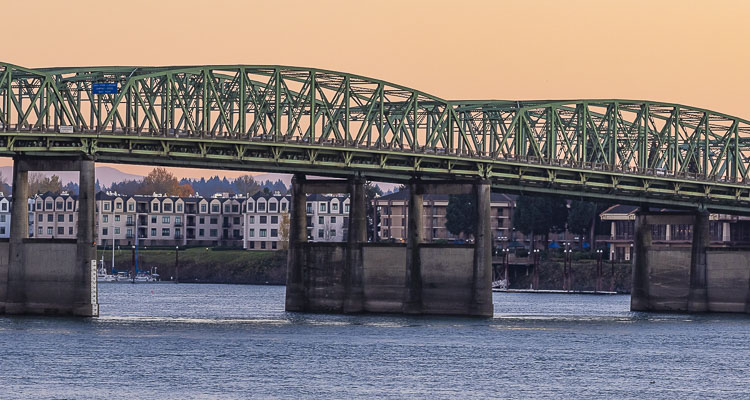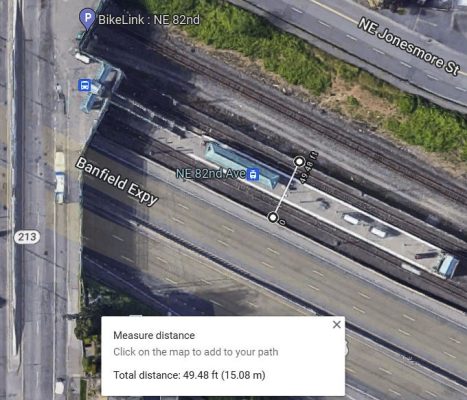
Camas resident Margaret Tweet offers her thoughts on the I-5 Bridge replacement project in advance of the Clark County Council’s consideration of priorities
Margaret Tweet
In November 2012, Clark County voters REJECTED the C-TRAN ballot proposition to raise the sales tax to extend Oregon’s TriMet Max light rail into Clark County. Every city in Clark County rejected the C-TRAN Proposition, as did limited county-area residents permitted to vote.

A 2013 Vancouver city petition asked for a public vote on the use of city resources to pay for light rail. The Clark County Elections Department struck down the first signature AND any duplicates, canceling 606 signatures, leaving the petition short just 32 signatures.
Undeterred, 75 citizens filed suit against defendants Clark County Auditor Greg Kimsey and Clark County in Cowlitz County Superior Court. On April 17, 2013 the judge ruled in favor of citizens, the original signatures total was updated to 6,046, and the petition was certified. Citizens presented the petition asking for a vote on light rail to the Vancouver City Council, which ignored the people and voted 5-2 not to put the light rail question on the ballot.
In November 2013, Clark County councilors placed an advisory vote on the ballot to oppose any light rail project in Clark County unless it is first supported by a majority of the voters in a county-wide advisory vote of the people. Over 68 percent of voters approved the measure. No county-wide advisory vote on light rail has been held since then.
Today, the Interstate Bridge Replacement (IBR) group insists that Clark County must accept Oregon’s costly MAX light rail on any I-5 replacement bridge. However, light rail is not required on a replacement bridge or tunnel at all. The I-5 replacement bridge is the biggest transportation project in the region in decades.
C-TRAN Express buses and Vanpool, currently serve both Washington and Oregon residents who are cross-river commuters. Oregon’s TriMet doesn’t offer cross-river public transit service. Instead, C-TRAN alone pays millions of dollars for transport over the Columbia River.
Buses or vans can be sized to meet changing demand, share a lane with other vehicles, and maximize limited transportation real estate and funds. Light rail runs on expensive fixed tracks on the ground that have been flooded by rain. Electrified cables above overheat in summer, and freeze in winter, stopping the trains. Buses are then called to rescue light rail passengers.
When the Oregon Columbia River Crossing oversight committee met in Oregon in 2011, they asked about the bus alternative instead of light rail.
“CRC Deputy Director Kris Strickler said cost was a driving force behind presenting five different alternatives in the DEIS, some of which offered bus rapid transit instead of light rail.
“At that time, cost was a factor,” Strickler said. “It was a driver in the discussion.”
See Oregon lawmakers say CRC project may be too expensive Issues, 2011
IBR early cost estimates for light rail of $1.4 billion, out of an estimated $4.8 billion I-5 Bridge replacement costs, were recently disclosed. Since only 1.7 percent of trips across the I-5 bridge utilize public transit, the price-tag seems outrageous.

IBR claims transit ridership is going to grow dramatically, yet C-TRAN ridership has steadily decreased, and the trend of working remotely continues. Past forecasts based on unexplained modeling assumptions haven’t materialized.
See Is the IBR setting up another transit failure?
How much land will the interstate bridge replacement remove from I-5 for transit? Express Bus (40-foot bus) or Bus Rapid Transit (60-foot articulated bus) can use a 12-foot-wide freeway lane on both the bridge and on I-5. Transportation architect Kevin Peterson has pointed out that one vehicle lane can handle about 1,800 vehicles an hour. If so, transit buses and vans could easily travel in a traffic lane, alongside other vehicles and occupy at most 10 percent of the vehicle capacity one lane provides. Why not allow other vehicles to use that lane when buses are not present?
Light rail demands three times or more space than a vehicle lane, and does not share with other vehicles.
“The amount of land required for side-by-side MAX light rail tracks varies. It appears to require 36 to 40 feet for non-station property. But at stations where people need a platform to board, it can be 50 feet or more in width. This graphic shows the 82nd Ave. MAX station in Portland on the north side of I-84.’’

High Tolls will be charged on both the I-5 Bridge and the I-205 bridges. For the 520 Bridge between the Eastside and Seattle, the toll rates are already set to increase by 15 percent in 2023. For a 6-Axle freight vehicle, the current one-way toll between 11 a.m. and 6 p.m. is $13.95 pay by mail.
On Tuesday July 19, 2022, the Clark County Council will consider a resolution on Clark County priorities for an I-5 Replacement Bridge. Citizen input on the resolution is allowed during public comment at the beginning of the 6 p.m. meeting, and/or written comments may be submitted.
Also read:
- Large crowd expected at C-TRAN Board of Directors Meeting Tuesday, April 15A large turnout is expected at the April 15 C-TRAN board meeting, where public input and a key vote on light rail funding will follow the recent removal of Michelle Belkot.
- Letter: ‘The IBR needs a more cost-effective design’Bob Ortblad argues the I-5 Bridge replacement project is overbudget and inefficient, urging a more cost-effective tunnel alternative to avoid excessive tolls and taxpayer burden.
- Clark County beginning installation of upgraded traffic signals in mid-AprilClark County will begin upgrading multiple traffic and pedestrian signals in mid-April to improve safety, accessibility, and transportation technology.
- Can $10 tolls be coming to the Interstate Bridge?Rep. John Ley examines a proposed Washington House bill that would double borrowing for the Interstate Bridge Replacement and potentially lead to high tolls affecting Southwest Washington drivers.
- Overnight full closure of I-5 in north Clark County for utility work, April 13Both directions of I-5 in north Clark County will be closed early Sunday morning, April 13, for utility work involving overhead power line relocation.










Light rail across the I-5 bridge might be appropriate in a scenario whereby Trimet light rail links up with the Clark County light rail system. Alas, there is no light rail system in southwest Washington at all to link up with nor will there be. There are no plans or even discussions about creating a light rail system in southwest Washington. So that’s a major disconnect (pun intended). If Trimet light rail is crammed into the project against the better instincts of southwest Washington voters, the residents of southwest Washington must not be required to fund the light rail portion of the project costs and must be exempt from paying tolls to cross the I-5 bridge, since Washington State residents who work in Oregon have been paying Oregon income taxes continuously plus the two additional Oregon state transportation taxes. In effect we are and have been paying tolls all along. All of these valid considerations must be factored into the solution set.
The Light Rail might do better next to the Train Track Bridge. It will need to be replaced also, so put them together. the WORLD CUP SOCCER is coming to town! Yea! I am against Tolls on a Freeway. let’s not be like New York. Use Infrastructure money while we have it.
What is going to happen to that Beautiful 100-year-old bridge that was paid for with Nickles? The toll ended when the loan was paid. My friends and family love crossing it. Did you know it’s a trivia question also? The longest extension bridge in America. I also take them to the Bridge of the Gods.
The flaw in your BRT plan, which otherwise is fine, is in the tell-all sentences “If so, transit buses and vans could easily travel in a traffic lane, ALONGSIDE OTHER VEHICLES [emphasis added] and occupy at most 10 percent of the vehicle capacity one lane provides. Why not allow other vehicles to use that lane when buses are not present?”
Well, because BRT is ALWAYS a failure unless it has its own lanes, which end up being essentially as much space as LR tracks consume. This has been proven around the world, and even in [gasp] American cities.
Have you not noticed that our summer here is now the summer that they (used to) have in Medford and Ashland? Do you think that trend will stop? Do you think that the coming breakdown in peaceful co-existence with China is going to magically transfer the battery business to the US so that everyone who now drives an ICE vehicle will be in EV’s?
The nasty truth is that driving private cars is going to become much more of a luxury activity again as it once was. That will happen within the next decade, and at that time LOTS of people who now drive to work in Oregon will be on buses which will go a lot more places directly. Give them the lanes they need to be efficient.
I hope that Oregon builds that “Northwest Connector” that Washington County so badly wants. It will be the perfect diversion for the extra traffic that a replacement bridge will generate, even when its expensive to drive.